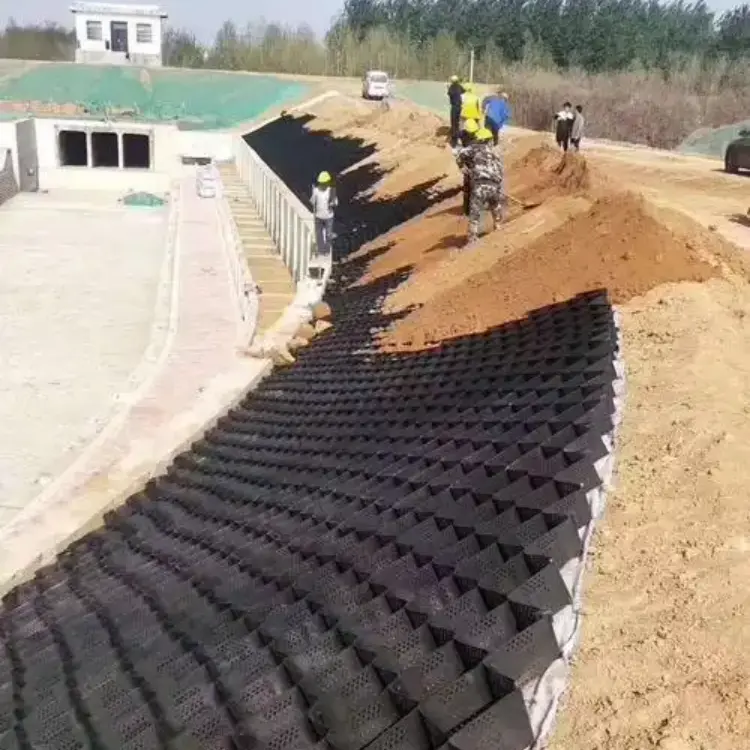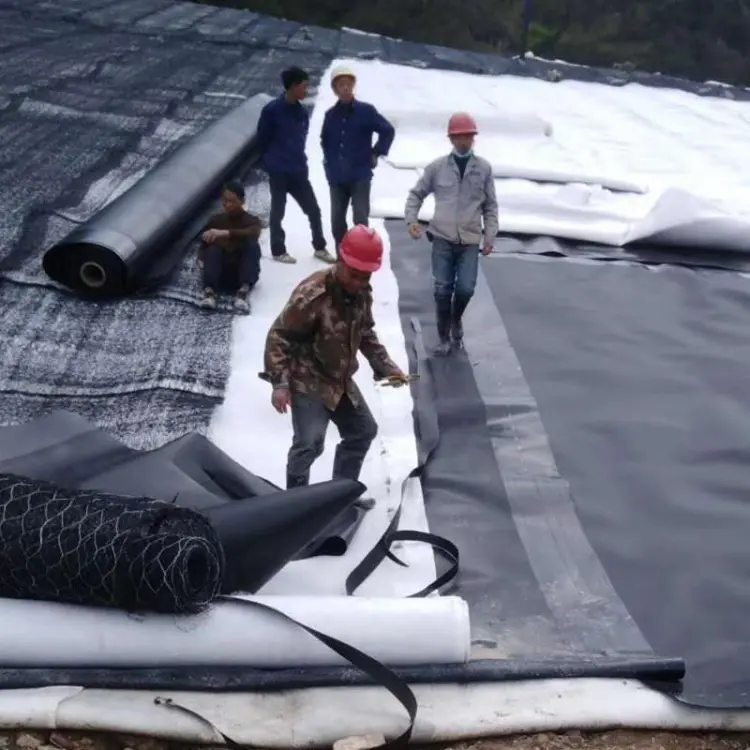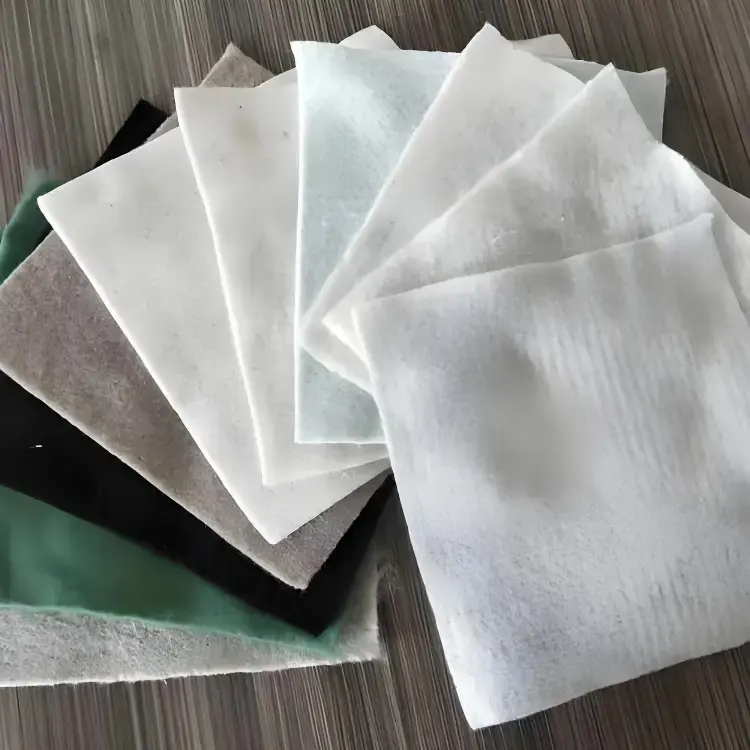Soil erosion during highway construction poses significant threats to project quality and surrounding ecosystems. The 3D geocell system, as an innovative geosynthetic material with unique structural properties, demonstrates remarkable advantages in erosion control.
I. Structure & Properties of 3D Geocells
- Material: High-density polyethylene (HDPE) hexagonal honeycomb structure
- Key Features:
- High Strength & Durability: Superior tensile strength, corrosion resistance, and >50-year service life
- 3D Confinement: Effectively disperses hydraulic impact force while enhancing surface soil shear strength
- Eco-Compatibility: Reduces particle migration through cell infill while providing vegetation growth space
II. Erosion Prevention Mechanisms
- Physical Protection
- Reduces rainfall erosion kinetic energy by 65% in high-precipitation mountainous areas through cellular load distribution
- Ecological Restoration
- Achieves 2.4× higher anti-scouring capacity per 30% vegetation coverage increase via root anchoring
- Adaptability
- Customizable parameters (height/length/weld spacing) for diverse geological conditions

III. Construction & Applications
PhaseKey StepsSlope PrepRemove loose debris, achieve even compactionGeocell LayoutAnchor expanded cells with tensioned fastenersMaterial FillingLayer-compact graded gravel/modified soil to 95% densityVegetationHydroseed with grass/shrub mixes, binders, and nutrients
Project Case:
- 80% vegetation coverage within 1 year post-construction
- 65% erosion reduction vs. conventional methods
IV. Conclusion
3D geocells combine mechanical stability with ecological benefits through:
- 65%+ erosion reduction via 3D load distribution
- 2.4× faster vegetation establishment
- 60% lower maintenance costs
The modular design ensures rapid deployment across complex terrains, making it ideal for sustainable highway projects.

